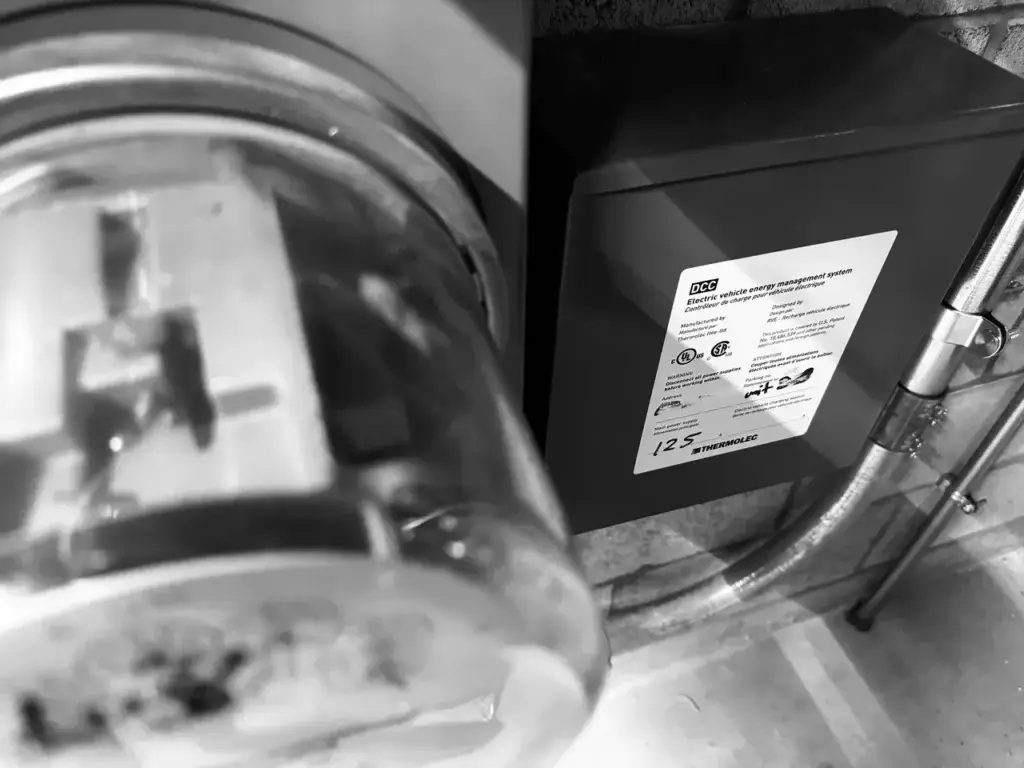The secret that may lower your LADWP electricity rates for common area electric usage has proven its worth to our homeowner’s association (HOA).
In the two years since our 26-unit building switched from a residential rate to the Los Angeles Department of Water and Power (LADWP) electricity rate for the A-1 commercial category, our homeowner’s association (HOA) has saved $5,000 per year on common are electricity. That’s a drop of about 20%—without any change in our electricity consumption.
The catch is that you have to know about the rate to ask for it. LADWP has confirmed to CondoWonk that it isn’t going to tell you about it unless you ask. And the rate is harder than ever to find on the LADWP website.
LADWP Electric Rates, in Brief
The residential rate known as R-1 has three tiers based on the amount of usage. To persuade customers to use air conditioners frugally, the highest rate, Tier 3, is significantly more expensive during the warmer months.
Single-family homes are billed as R-1, as are condo units that receive an individual bill from LADWP.
Most HOAs receive a separate bill for their condominium common area—elevators, lighting, garage doors and everything else outside the units. By default, LADWP bills those HOA common areas on an R-1 rate as if they are a single dwelling unit.
How HOAs Get Penalized
Because most condominium common areas use more energy than a single dwelling unit, HOAs end up with much of their usage in the punitive Tier 3 rate.
That means HOAs pay more for electricity in general. In the summer months, when the higher Tier 3 rates kick in, they pay a lot extra.
In most cases, HOAs are eligible for an A-1 commercial rate, usually the A-1A rate. (The A-1B rate is adjusted for time of use and would generally not be applicable to condominiums.)
And in most cases, changing to an A-1A rate would save the HOA money.
The only way to get the A-1A rate is to ask.
LADWP Response
When CondoWonk first reported that HOAs could save money on common area electricity using a commercial rate, LADWP failed to comment, despite several requests. This time, an LADWP spokesperson responded via email to a written list of questions.
LADWP confirmed that it won’t automatically put an HOA in the most favorable LADWP electricity rates. The HOA must ask for it.
LADWP confirmed that the LADWP website has no information stating that condominium buildings are eligible for the A-1A rate.
The Disappearing On-Line Calculator
LADWP also confirmed that the calculator that allowed HOAs to figure out if the A-1A rate would save them money has been removed from the LADWP website.
Previously, CondoWonk published information about LADWP’s simple on-line calculator that would allow you to quickly see if the A-1A Rate would save you money, and how much.
That calculator no longer appears on the LADWP website. According to LADWP, “The rate comparison website encountered some information technology (IT) issues. LADWP’s IT department is working to provide another rate comparison tool for the public.”
Website Misdirection
If you search the LADWP website with the word “condominium,” it directs you to residential LADWP electrcity rates.
If you manage to find the Commercial and Multi-Family Rate A-1 on the LADWP website, the words “condominium” or “homeowners association” are not used anywhere. Instead, it refers only to “apartment buildings.”
A Class-Action Lawsuit
In the case of Michael Cassell v. City of Los Angeles, HOAs are suing LADWP in LA County Superior Court.
Like the situation described in this article, the case concerns a complaint that LADWP overcharged HOAs by assigning the residential rate rather than a commercial A-1 rate. But there are some differences.
In the CondoWonk article, overcharges concern only the common area electricity paid by the HOA when units are separately metered.
In the class-action lawsuit, each plaintiff HOA has a single account for their entire property, which is then privately sub-metered to the units. After successfully switching from R-1 to the A-1 rate, they are seeking reimbursement for all overpayments.
Our Electric Bills
In the year before our 26-unit building was approved for the rate change, our monthly bills ranged from a low of about $1,900 a month to up to more than $2,700 in the summer, with a monthly average of $2,184. In the two years since, our monthly bills have averaged $1,750 per month, ranging only a couple of hundred dollars in either direction.
Our usage is steady all year. Now, our bills are also steady all year, making for better cash flow.
It’s a tidy savings for us. Multiplied by all the condominiums that are being overcharged by LADWP, it’s a lot.
The Fundamental Question
Both the class-action lawsuit and the CondoWonk article ask the same question: why is LADWP placing condominiums in a residential category when they are entitled to a commercial rate that would save them money?
I asked LADWP why they don’t just automatically put customers in the category that will result in the lowest rate for the customer, based on their history. Here was the reply:
Condominiums and Homeowners Associations (HOAs) are generally assigned an R-1 standard residential rate by default, in accordance with the electric rate ordinance provisions…Under Rule No. 12 of the Rules Governing Water and Electric Service, LADWP is not obligated to assign Condominium or HOA customers to an optional rate schedule other than R-1 absent a request from the Customer.
If that’s what Rule 12 means, then maybe it’s time to change the rule.
Final Thoughts
LADWP puts the burden on HOAs to ask for a more favorable rate, yet it acknowledges that its own website has no information stating that the commercial rate is available to HOAs.
At a minimum, LADWP needs to document the availability of the A-1A rate on their website, with easily searchable terms. And it needs to notify HOA clients about the ability to switch rates.
In the long run, LADWP needs to figure out a way to put customers in the rate category that is most appropriate for them.
HOAs should not have to order off-menu.
Companion Article: Should you switch LADWP electricity rates? If so, here’s how.
Coming Soon: Getting the best rate wherever you live. If you are customer of an electric company outside LA, what kind of rate are you using? Write to info@condowonk.com and let us know.








